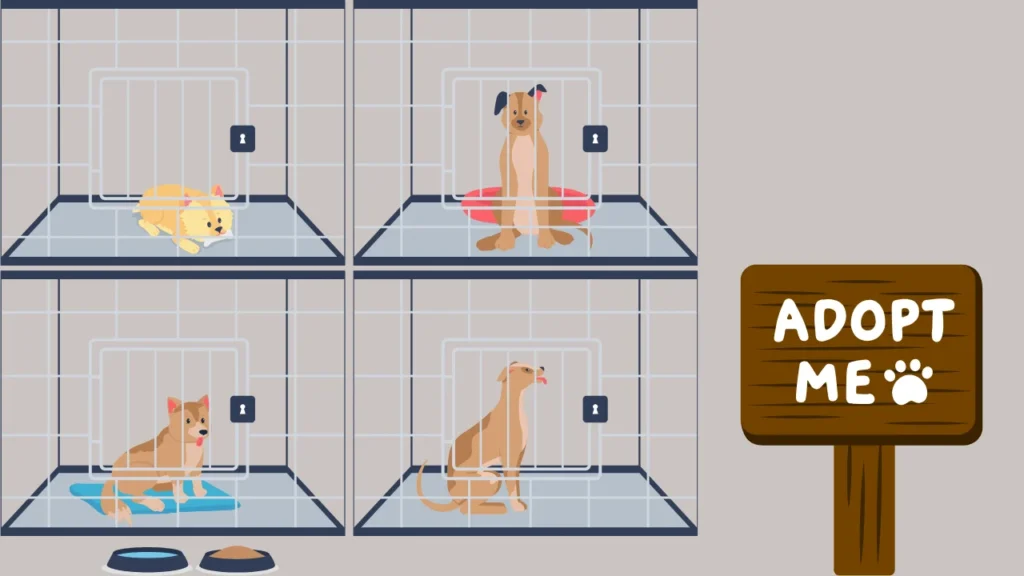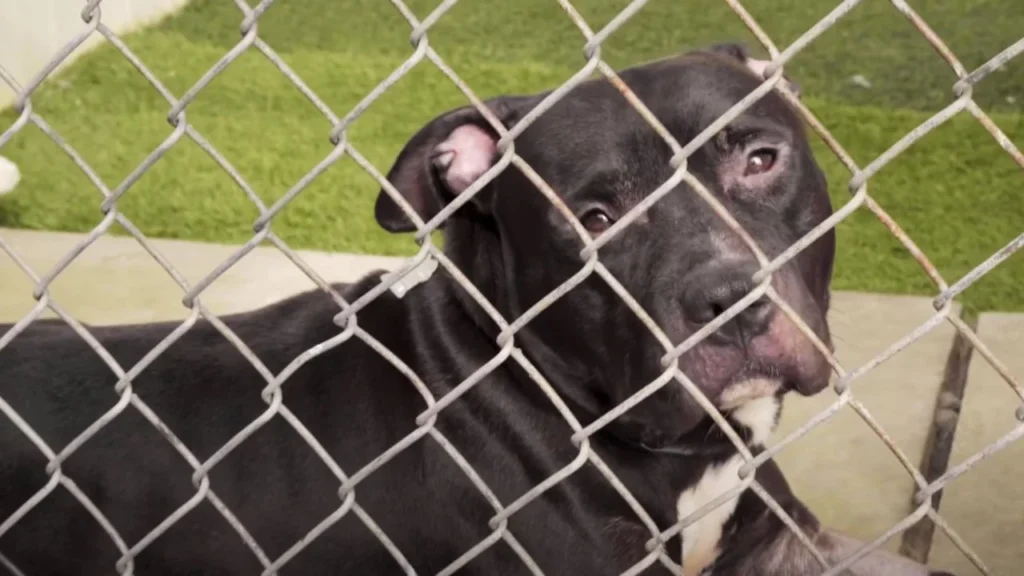When I researched Know the Percentage of Pitbulls in Shelters vs Other Dogs I was shocked. In 2023, pit bulls made up 22% of dogs in shelters, despite being only 5% of the total dog population. This disproportionate number is alarming. Find out How to Stop a Dog’s Nail from Bleeding effectively.
Pit bulls also account for nearly 40% of all dogs euthanized annually in shelters. This stark statistic reflects societal misconceptions and the challenges this breed faces in finding homes. The numbers speak volumes about the issue at hand.
Quick Navigation
What impact does the overbreeding of pit bulls have on shelter populations?


Overbreeding of pit bulls significantly impacts shelter populations by contributing to an oversupply of dogs. As more pit bulls are bred, shelters become overwhelmed with the number of dogs needing homes. This leads to higher intake rates and increased competition for limited resources like space and funding.
With more pit bulls than available adopters, many of these dogs face long stays in shelters or, in worst cases, euthanasia. Overbreeding also fuels irresponsible ownership, where people breed pit bulls without considering the long-term responsibility, further exacerbating the shelter population crisis. Effective spaying/neutering programs can help mitigate this issue.
Pit Bulls in Shelters


Pit bulls are often discussed when it comes to shelters, and for good reason. Let’s take a closer look at why this breed is overrepresented and what challenges it faces in finding homes.
Prevalence of Pit Bulls in Shelters
Pit bulls make up only about 5% of the dog population, yet they account for 22% of shelter intakes. This high percentage is alarming compared to other breeds. It’s important to understand why pit bulls are entering shelters at such a high rate.
Euthanasia Rates for Pit Bulls
Pit bulls also face higher euthanasia rates, making up around 40% of shelter euthanasia cases. This is far greater than any other breed. Sadly, overcrowding and limited space in shelters often lead to these dogs being put down.
Why Are Pit Bulls Overrepresented?
Several factors contribute to this overrepresentation. Breed-specific laws, or BSL, lead to many pit bulls being surrendered. Additionally, misconceptions about their behavior and irresponsible breeding practices worsen their chances for adoption. Discover if You Can Use Baby Shampoo on Dogs and its effects.
Other Dog Breeds in Shelters
Prevalence of Other Dog Breeds
While pit bulls are often in the spotlight, other dog breeds also fill up shelter kennels. For example, mixed-breed dogs are the most common, making up about 50% of dogs in shelters across the U.S. The next most common breeds are Chihuahuas, followed by Labrador Retrievers, with each representing a significant portion of the shelter population.
Euthanasia Rates Among Other Breeds
When it comes to euthanasia rates, the numbers vary for each breed. Larger dogs like Labrador Retrievers and German Shepherds face a higher risk of being put down, largely due to space constraints in shelters. In contrast, small breed dogs, like Chihuahuas, have slightly better adoption rates but still experience high euthanasia rates in overcrowded shelters, sometimes reaching as high as 30%.
Contributing Factors for Other Breeds
A variety of reasons contribute to why these dogs end up in shelters. For one, overpopulation is a significant issue, especially with irresponsible breeding practices. Additionally, life changes for owners, such as moving to a new home or experiencing financial hardship, often lead to surrenders, especially among popular breeds like Labradors. As a result, shelters see a constant influx of these breeds alongside pit bulls. Learn How to Clip Dog Nails safely at home.
Comparative Analysis


In this section, let’s dive into the comparison between pit bulls and other dog breeds in shelters. You’ll see how pit bulls stack up, especially when we look at their numbers and how they differ from other breeds.
Pit Bulls vs. Other Breeds
Pit bulls make up only about 5% of the total dog population in the United States, yet they account for 22% of dogs entering shelters. That’s a huge discrepancy! While the overall number of dogs entering shelters varies, pit bulls remain one of the most common breeds found there.
Other Dog Breeds in Shelters


When we look at other breeds, the numbers are a bit more balanced. For example, mixed-breed dogs (mutts) are the most common in shelters. In fact, about 30% of shelter dogs are mixed breeds, and other popular breeds like Chihuahuas and Labradors also see shelter numbers, but not at the same rate as pit bulls.
Why the Disparity?
So, why are pit bulls overrepresented in shelters? A big part of it is breed-specific legislation (BSL), which restricts pit bulls in certain areas. This leads to more surrenders from owners who are facing legal issues or living in places that don’t allow them to keep their dogs.
Implications
When you start looking deeper into the issue of pit bulls in shelters, you’ll realize the consequences are far-reaching. It’s not just about numbers; the impact on the shelter system and the dogs themselves is significant.
Overcrowding in Shelters
One of the biggest issues with pit bulls being overrepresented in shelters is overcrowding. With pit bulls making up around 22% of shelter populations, this puts enormous pressure on resources, which unfortunately leads to higher euthanasia rates. This not only impacts the dogs but also strains shelter staff and volunteers, who are working tirelessly to find them homes.
High Euthanasia Rates
It’s heartbreaking to learn that approximately 40% of all dogs euthanized in U.S. shelters are pit bulls. This statistic highlights a critical problem—more dogs are being put down simply because there aren’t enough homes for them. The situation is dire, especially given the breed’s reputation and the barriers to adoption.
Breed-Specific Legislation (BSL)
Another factor contributing to this issue is breed-specific legislation (BSL). Many cities and states have laws that ban or restrict pit bulls, which means people are less likely to adopt them. In fact, 20% of U.S. municipalities have some form of breed-specific laws, making it even harder for pit bulls to get adopted. Learn how a cattle dog differs from a blue heeler in our article Cattle Dog vs Blue Heeler.
Solutions and Recommendations


Here, we’ll dive into some effective solutions and recommendations that can help address the overpopulation of pit bulls in shelters. To fully understand the issue, it’s important to know the percentage of Pitbulls in shelters vs other dogs. By making small changes and pushing for awareness, we can make a big difference.
Public Education
One of the first steps we can take is to educate the public about pit bulls. Did you know that pit bulls make up around 22% of shelter populations, yet they’re often misunderstood and wrongly labeled as aggressive? Through campaigns and educational programs, we can help change perceptions and encourage responsible pet ownership, ensuring more pit bulls are kept in loving homes.
Policy Changes
It’s crucial to advocate for breed-neutral legislation. Many areas still have breed-specific laws that unfairly target pit bulls, leading to higher surrender rates. In fact, over 600 cities in the U.S. have some form of breed-specific legislation. By pushing for changes in these policies, we can prevent discrimination and make adoption easier for pit bulls and other breeds.
Support for Shelters
Shelters often face overcrowding, especially with pit bulls, and they need all the help they can get. By adopting, fostering, or donating to shelters, we can directly impact the lives of these dogs. Did you know that adoption rates for pit bulls can increase by up to 30% with the right outreach programs? If we all get involved, we can reduce shelter overcrowding and give pit bulls the chance they deserve. Discover the differences between Lhasa Apso and Shih Tzu dogs in our article Lhasa Apso vs Shih Tzu Dogs.
Wrap Up
As I reflect on the percentage of pitbulls in shelters vs other dogs, it’s clear that pit bulls face significant challenges. With approximately 22% of shelter dogs being pit bulls, this breed is disproportionately represented.
Unfortunately, due to breed-specific legislation and media portrayal, they are often overlooked for adoption. It’s essential that we spread awareness and promote responsible pet ownership to reduce this disparity and improve adoption rates for pit bulls, ensuring all dogs find loving homes.
FAQs
What role does media coverage play in the high percentage of pit bulls in shelters?
Media often portrays pit bulls negatively, associating them with aggression and violence. This leads to misconceptions, influencing public perception and reducing adoption rates. Know the Percentage of Pitbulls in Shelters vs Other Dogs to understand how these misconceptions impact their shelter numbers. People may hesitate to adopt pit bulls due to fear, increasing their chances of being surrendered. Changing media narratives can improve their adoptability and reduce shelter numbers.
What are the long-term trends in the number of pit bulls in shelters over the past decade?
Over the past decade, the number of pit bulls in shelters has remained high, with no significant decline in intake rates. While adoption rates for pit bulls have slightly improved due to advocacy, they still account for a disproportionate share of shelter populations. Overbreeding, breed-specific legislation, and public fear continue to contribute to their overrepresentation.
How do geographical regions differ in the percentage of pit bulls in shelters vs other dogs?
Geographical regions with breed-specific legislation (BSL) tend to have higher numbers of pit bulls in shelters, as laws restrict ownership, leading to more surrenders. If you want to know the percentage of Pitbulls in shelters vs other dogs areas with less restrictive policies often see fewer pit bulls in shelters. Urban areas with higher populations also experience increased shelter intakes of pit bulls compared to rural regions.
What are the most common reasons for pit bull surrenders compared to other breeds?
Pit bulls are commonly surrendered due to breed-specific legislation (BSL), which forces owners to give up their pets when moving to restricted areas. Other reasons include behavioral issues, financial hardship, and irresponsible breeding practices. Compared to other breeds, pit bulls face more prejudice, leading to higher surrender rates and increased numbers in shelters.
Are there specific shelter policies that help or hinder the adoption of pit bulls over other dogs?
Some shelter policies unintentionally hinder pit bull adoption by focusing on breed bans or imposing stricter requirements for pit bull adopters. However, when you know the percentage of Pitbulls in shelters vs other dogs it becomes clear why breed-neutral policies, adoption events, and targeted outreach programs are crucial. Shelters that prioritize education, promote responsible ownership, and reduce restrictions see greater success in adopting out pit bulls.




